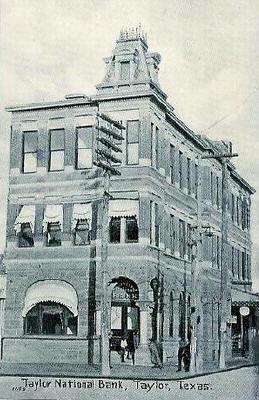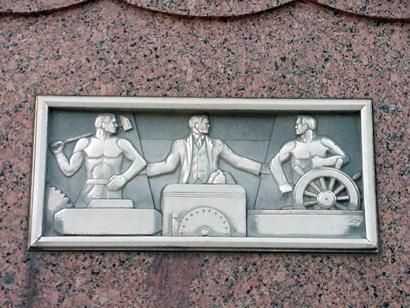|
The
farmer climbed in his old pickup and drove into Taylor
to see his banker.
His usual cigar clamped firmly in his mouth, the banker cordially
invited his long-time customer to sit down and tell him how he could
be of service.
“Well, I need to borrow a couple of thousand dollars,” the farmer
said.
“What for?” the banker asked, gumming his stogie. “You had a good
cotton crop this year. Everybody around here did.”
“Something unexpected came up,” he farmer said. “A lightning rod salesman
came by the other day and told me my barn was an accident waiting
to happen. One bolt of lighting and it’d burn down. I can’t afford
to lose my barn.”
The banker bit down a little harder on his soggy cigar.
“You can’t afford to buy $2,000 worth of lightning rods, either,”
he said. “In the first place, I don’t think lighting rods work. In
the second place, $2,000 is too damn much money for two or three pieces
of metal and some fancy glass bulbs. I’m not loaning you the money.”
Unable to finance the purchase, the farmer turned down the lightning
rod man. Shrugging, the salesman moved on. Texas had no shortage of
suckers. The traveling salesman who lost a deal in
Williamson County
on account of a frugal country banker practiced a not-so-honorable
trade dating back to the 1700s. |
 |
In
1749, Benjamin Franklin became the first scientist to opine that lighting
rods could protect buildings, churches, houses and barns from thunderstorm-generated
electrical discharges better known as lightning bolts. As soon as
lightning rods entered into commercial production, peddlers of protection
began steepling America with the ornate iron rods. If nothing else,
the score or more of lightning dissipation devices patented since
the mid-18th century at least served one purpose—they made people
feel safer.
No one doubted the power of a bolt from above. Well into the 1930s,
people in and around the Dallas
County town of Wilmer
still talked about a fierce thunderstorm that hit the community on
Aug. 10, 1897.
Rain and lightning forced a wheat thrashing crew to seek shelter in
a newly built barn. But lightning struck the roof, killing a man and
his eight-year-old son as well as another member of the work crew.
A horse and a mule also died from the blast.
When the barn and adjacent farm house went on the market a few years
later, charred pieces of clothing still stuck to a portion of its
interior wall, the new owner immediately had lightning rods installed.
But by the early 1950s, the popularity of lightning rods had waned
substantially. Old lightning rods became collectibles and are about
as easy to find these days as a locally owned bank or a banker like
the one who nixed his valued customer’s oral application for a lightning
rod loan. |
 |
A well-dressed
banker brings together two shirtless men representing Industry and
Shipping in an Art Deco Bank detail in Beaumont.
TE
photo |
Retired
Texas National Guard public information officer Ed Komandosky of Taylor
later had the same banker. For a time he even worked for him.
“Money is for having,” Komandosky said the banker used to tell him,
“not spending.”
That must have been why the banker once refused to sign a note so
Komandosky could buy a new car.
“You don’t need a new car,” the banker told him. “The one you got
is just fine.”
In fact, the car the banker drove had rolled off the assembly line
years before the “old” vehicle Komandosky wanted to replace.
Of course, the Taylor bank president didn’t turn down every loan application
made at his bank. If he had done that, his institution would not have
had much money to loan. But he was judicious in putting his name on
someone’s note.
According to Komandosky, the banker’s more savvy customers watched
his cigar to judge how they were doing in making their case for a
loan.
“He always kept his cigar on the right side of his mouth,” Komandosky
remembered. “But if he decided to sign someone’s note, he’d move that
cigar to the left side.”
If the banker kept his cigar firmly in place on the right side of
his mouth, his loan applicants knew they had to keep talking.
By the time the banker approved his last note, cigar smoking had declined
sharply and lightning rod salesmen had gone the way of most other
door-to-door marketers. And recent research tends to back up the long-time
Taylor banker’s belief that lightning rods don’t work.
The National Fire Protection Association first developed standards
for lightning rods in 1904. NFPA codes are not law, but they have
been adopted into the fire codes of most local governments. In the
1990s the association came under pressure to modernize the part of
its suggested code dealing with lightning rods, which in setting standards
for their placement in effect endorsed such devices as scientifically
proven.
Now, as the online encyclopedia Wikipedia says: “No major standards
body, such as the NFPA…has currently endorsed a device that can prevent
or reduce lighting strikes.”
© Mike Cox
"Texas Tales"
August 29, 2007 column
|
| Books
by Mike Cox - Order Here |
|
|
